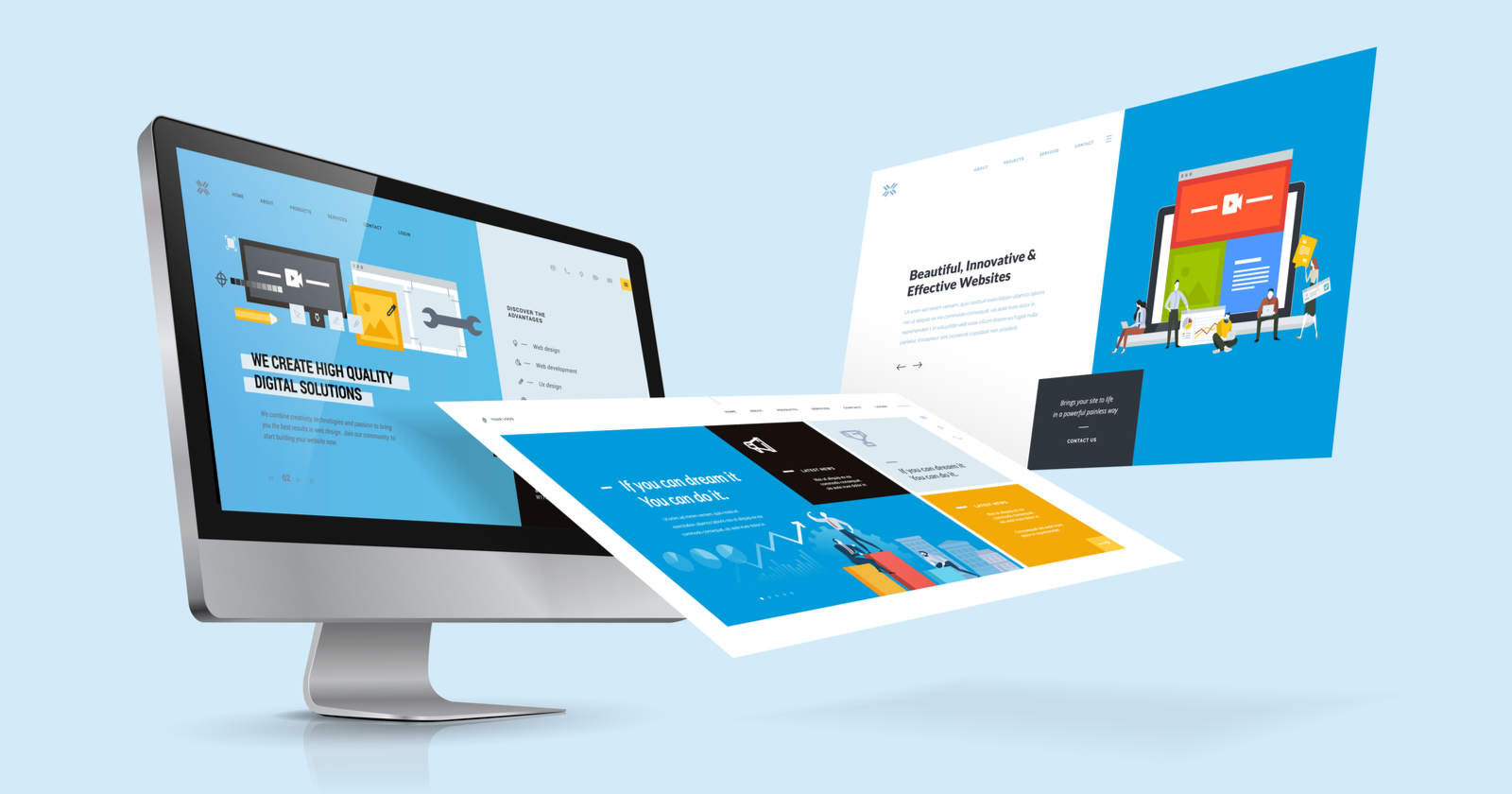Future-Proof Your Organization with Ingenious Website Design Trends
Make Best Use Of Interaction: Proven Techniques for Exceptional Web Site Style
In a significantly electronic landscape, the relevance of a user-centric technique to internet site design can not be overstated. Recognizing exactly how effective navigating, visual pecking order, and content optimization merge to improve individual engagement is important for any type of organization looking for to make a significant effect. As we explore different tested methods that contribute to superior web site design, the interplay between these aspects discloses not just finest techniques yet likewise innovative methods that can raise individual experience. What might surprise you is exactly how straightforward adjustments can result in amazing transformations in interaction metrics.
Relevance of User-Centric Layout
User-centric style is necessary in creating reliable internet sites, as it focuses on the demands and preferences of the end customer from the actual beginning of the layout process (website design). This technique ensures that the website is customized to give an optimum experience for users, helping with involvement and fulfillment. By comprehending user behaviors, objectives, and pain factors, developers can create user interfaces that resonate with their target market and promote a sense of connection
Executing user-centric design includes comprehensive study, consisting of individual personas and trip mapping, which help in recognizing the certain needs of different user sections. This data-driven approach enables educated choices regarding content, performance, and design, ultimately causing the production of an extra appealing and instinctive web experience.
Additionally, a user-centric strategy promotes ease of access and inclusivity, making certain that web sites deal with diverse user capabilities and preferences. This not only enhances user experience but likewise expands the audience reach. In a competitive digital landscape, prioritizing user-centric style is not just useful; it is vital for driving interaction, lowering bounce prices, and cultivating customer loyalty. Reliable websites are those that resonate with customers, making user-centric style a basic concept for effective internet development.
Effective Navigating Methods
A well-structured navigation system is a foundation of effective website layout, developing directly on the principles of user-centric style. Efficient navigating allows individuals to find details rapidly and with ease, improving their overall experience and encouraging longer check outs.
To attain this, think about carrying out a clear pecking order in your navigating food selection. Key categories ought to be right away noticeable, while subcategories can be disclosed with dropdowns or expanding food selections. This organization assists individuals anticipate where they might discover pertinent content, lowering disappointment.

Uniformity is important; use familiar terminology and style aspects throughout the site to stay clear of complication. Breadcrumb routes can also be advantageous, offering customers with contextual awareness of their location within the website and allowing simple backtracking.
Finally, make certain that your navigation is responsive and mobile-friendly. As more individuals accessibility web sites via mobile phones, adjusting your navigating for smaller sized screens is necessary for preserving functionality and ease of access. By focusing on these methods, you can produce a smooth navigating experience that keeps users involved.
Visual Power Structure and Format
Establishing a clear visual hierarchy is necessary address for assisting customers with a web site's material properly. A well-structured format not just improves individual experience however likewise influences how site visitors communicate and view with info. By purposefully employing size, spacing, contrast, and shade, designers can produce focal factors that draw focus to the most crucial components, such as headings, contacts us to activity, or images.
Integrating a grid system can better boost visual hierarchy by providing a regular structure for content positioning. This organization permits users to navigate the site without effort, making it less complicated to absorb information (website design). Furthermore, the usage of whitespace is vital; it creates breathing space around elements, minimizing cognitive overload and highlighting key material

Content Optimization Strategies
While producing aesthetically enticing layouts is necessary, the performance of a site eventually depends upon just how well its material is enhanced for both internet search engine and user interaction. Material optimization involves a critical method that improves visibility and significance, eventually driving website traffic and maintaining visitors.
First, keyword study is fundamental. Identifying pertinent search phrases that line up with individual intent permits the combination of these terms naturally right into headings, message, and meta summaries. This not only helps in placing higher on online search engine yet also improves the quality of material for users.

In addition, optimizing for neighborhood SEO can boost interaction for region-specific target markets. Integrating local key phrases and creating material that addresses local passions enhances significance.
Last but not least, on a regular basis updating material ensures that it stays useful and fresh, appealing to both online search engine and returning customers. By focusing on these content optimization methods, organizations can create a compelling online presence that fosters interaction and drives conversions.
Responsive and Mobile-First Approaches
Customer engagement and material presence are increasingly influenced by the capability of an internet site to adapt perfectly throughout numerous tools. With the rise of mobile browsing, utilizing receptive style and mobile-first strategies has actually become vital for efficient internet development. Responsive design guarantees that a single web site design readjusts fluidly to various display dimensions, from desktop computers to smart devices, therefore providing a consistent user experience.
On the various other hand, a mobile-first method prioritizes the mobile user experience during the layout procedure. By creating for smaller sized screens initially, programmers can concentrate on necessary functions and improve performance, ensuring that customers are not bewildered by unnecessary web content. This strategy likewise improves filling times, which is important for maintaining visitors.
Both strategies add to higher engagement prices, as users are more probable to communicate with a website that is easy to use and visually enticing. Additionally, search engines prefer mobile-optimized sites in positions, thus improving presence. In summary, adopting mobile-first and receptive design strategies is important for optimizing user interaction and ensuring that material continues to be available and reliable across all gadgets.
Verdict
Reliable navigation methods, a well-defined visual power structure, and optimization of material considerably boost customer experience. Jointly, these techniques not only assist in details retrieval yet likewise foster much deeper user interaction, ultimately contributing to greater interaction prices and total internet site success.
As we check out different tested techniques that add to impressive site Read More Here style, the interplay in between these components exposes not only best techniques however likewise innovative strategies that can boost individual experience.User-centric style is important in creating reliable web sites, as it prioritizes the demands and choices of the end user from the actual beginning of the design procedure. Efficient websites are those that reverberate with individuals, making user-centric layout an essential principle for effective web growth.
Responsive design makes sure that a single website design changes fluidly to different display sizes, from desktop computers to mobile phones, thereby offering a constant user experience.
In recap, adopting mobile-first and responsive style techniques is vital for maximizing individual engagement and making sure that content stays accessible and efficient throughout all devices.